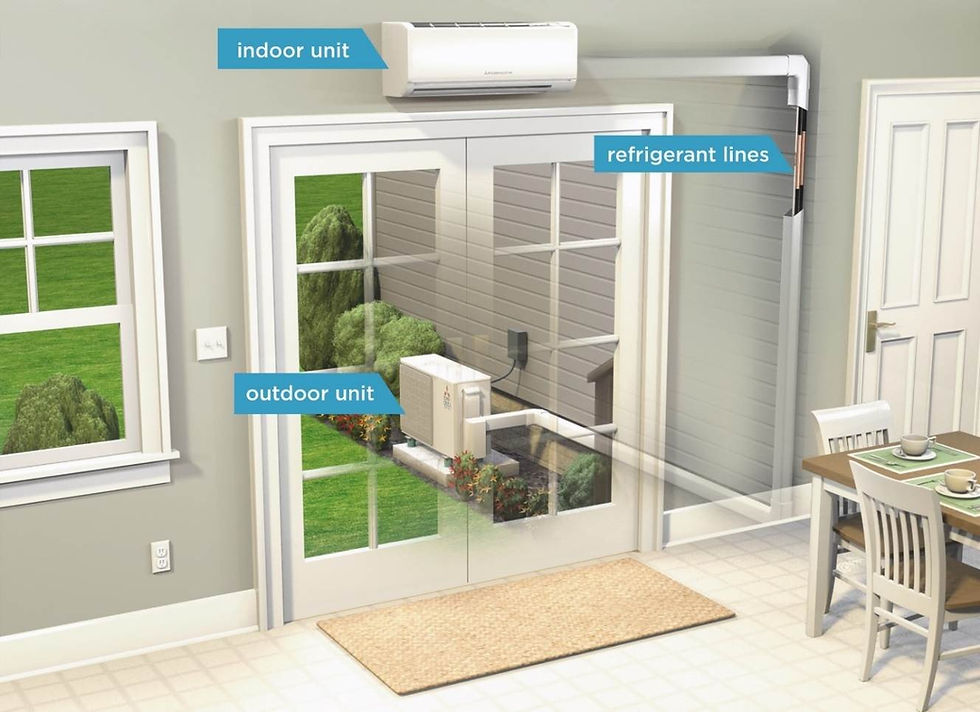A Cool Home in Summer Heat
- Gary Martin
- Jul 12, 2020
- 3 min read
Updated: Jun 11, 2021
July 26, 2020. 10 am. It’s 32 degrees and muggy. It’s been stinkin’ hot for weeks. It’s fine if you have air and live by water. It’s not if you don’t.
Heat is hard on both people and homes. So how can we beat the heat and protect our homes? There are a number of remedies for heat, starting with the roof. I'm a big fan of steel roofs. Here’s a simple fact to consider: heat rises, sure, but heat can also radiate from your attic into your house - even if the attic has lots of insulation. I know this from my own home. When the shingles on our last home were kaput, I redid the roof to (a) make it more durable and (b) cool the house. I double-strapped the roof right over the old shingles (Bonus: no shingle stripping or disposal fee) and installed steel roofing instead of shingles. Double-strapping gave me added ventilation, and light coloured steel reflects the sun, unlike most asphalt shingles. Steel roofs come with full-length ridge vents which, when combined with full-length soffit vents, give you great ventilation. The new roof reduced our temperature on the second floor by 10 degrees on hot days. And, of course, steel roofs last much longer, so steel is actually cheaper over the long term. Another bonus: it's recyclable. It's a big selling feature too if you're planning to move. And I think steel looks way better. But if you decide to do new shingles instead, black is definitely a no-no given what we expect in the summer. Choose a lighter colour. And while you're redoing your shingles, talk to your roofer about adding extra ventilation.
There are a bunch of other tips to keep your home cool:
Deciduous trees (e.g. maples and oaks) on the south and west side of a house will block summer sun but lose their leaves in the fall and allow winter sun in;
Build a well-insulated and well-sealed house, or add insulation and air-seal the heck out of it. That will keep heat out in summer as well as it keeps heat in during the winter;
The simplest measure is to open windows to let in cool night air, and then close the windows and curtains inside during the day to keep sun and heat out. (This works better if your home is well insulated and sealed!);
Build structures that shade windows from the outside (e.g. awnings, arbors, big roof overhands, exterior blinds and so on) - but that allow winter sun to warm your house;
Design for natural ventilation. Build features that use the stack effect in a house to maximize air exiting the house upstairs. That will draw air in from the ground floor creating an upward draft that carries hot air out;
Also situate the house and windows to take advantage of prevailing winds, which are usually from the south and west here, for natural ventilation;
Fans work well – in on ground floor, out on top floor, and ceiling fans to boost natural air currents;
Air source heat pumps are efficient for cooling, and they can lower heating costs too. My favorite is the wall mounted, air source ductless mini split heat pump (see below). The cool thing about heat pumps is they can find heat in the winter air and help warm your house. Check with government for energy efficiency rebates for upgrading your heating and cooling system.

Source: Energy Star
There's another important reason for proper ventilation and air conditioning: Summers here are getting more hot and muggy. Humidity inside can lead to mold and rot which can make you ill and can deteriorate numerous building components. Humidity is a topic for another blog post! Just be aware that proper ventilation is about more than keeping you comfortable inside.
Why do we need to pay attention to this? The screenshot below shows historical data in blue and projected weather trends (from climate models) in red. The heavy black line is the average of the number of days above 30 degrees at current rates of warming.
Temperature Records and Modelling For Ottawa (High Carbon Scenario)

Source: Climate Atlas of Canada
According to the science it looks like temperatures year-round will keep rising over the next decades.
So that’s a short list of why and how to manage hot summers. A wise homeowner will plan for staying cool on the stinkin' hot days that are coming. For more tips and a tailored strategy for your home, call 613-222-5432 or email gary.martin@carleton.ca .

Comments